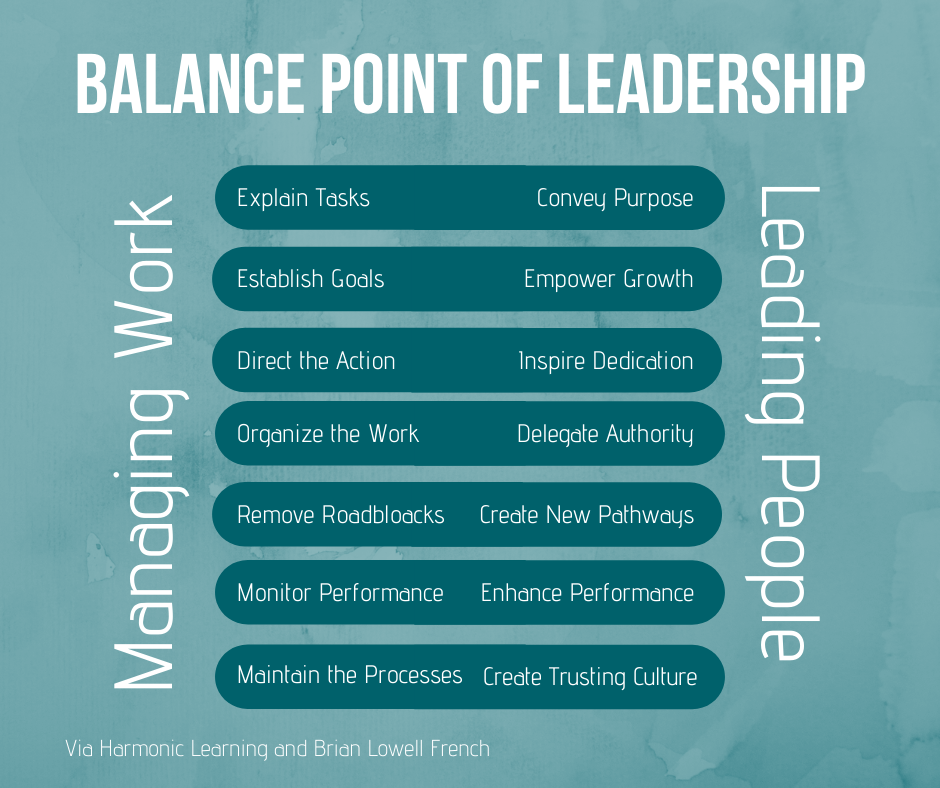Leadership vs. Management in the Digital Era
 What is the difference between a leader and a manager? Is it better to be one than the other? Should I try to be both? These are the questions that have been discussed and dissected by leader-managers for ages. First, we’ll be defining leadership vs. management, then we’ll discuss the balance points between leaders and managers, and finally we’ll delve into what leadership and management look like in today’s digital age.
What is the difference between a leader and a manager? Is it better to be one than the other? Should I try to be both? These are the questions that have been discussed and dissected by leader-managers for ages. First, we’ll be defining leadership vs. management, then we’ll discuss the balance points between leaders and managers, and finally we’ll delve into what leadership and management look like in today’s digital age.
Defining Leadership & Management
Management often delineates itself from leadership in that it is more concerned with processes and task-completion. It focuses on motivating people to accomplish tasks regularly and efficiently. A manager oversees the organizational properties of running a team. The title “manager” is often just that, a title that denotes a designated role within a company or organization. But, as is often confusing, having the title of “manager’ does not necessarily mean that someone is automatically a leader.
Leaders are people who fuse their future vision with their ability to influence others to effect positive change in the people around them. They empower, encourage, and inspire others to do their jobs well. Rather than focus on the details of a task, project, or process, leaders are focused on helping those people who are completing the task, project, or process. They work to align people with the goals of the organization and motivate them to believe in these goals. In short, you can manage things, but you lead people.
Harvard Business School Professor Joe Fuller believes that “the ultimate intersection between leadership and management is an appreciation for what motivates and causes individuals to behave the way they do, and the ability to draw out the best of them with a purpose in mind.”
Of course, in order for an organization to be successful, we need both managers and leaders. But these roles are not mutually exclusive from the other. Often, but not always, the best managers are also leaders.
How to Balance Both
If your official title is “manager”, but you are also a leader, you might be asking how to be both and to be both well. The answer is balance. Leadership and management must strike a balance in order to be successful together. Aspects of leadership and management are complimentary. Both are necessary to level the other out. The chart pictured delineates the balance points of leadership and management.
It’s important to note that sometimes people are strong leaders but weak managers and vice versa. Sometimes, people are a combination of both. If you’re hiring a new team member or looking to foster growth in an employee, it’s critical to know what you are looking for in a new employee and what the strengths are of your current team.
Leadership and Management in the Digital World
With the rapid shift to remote work in late March, leadership and management have taken on whole new meanings for those in supervisory positions. Instead of meeting team members face-to-face, managers must communicate and connect with their teams from scattered geographic locations. If you’re in this position, you’ve probably been trying lots of different ways to manage and connect with your teams as they get comfortable with remote work.
Digital Leadership Best Practices
To navigate this new challenge, we’ve put together a list of some ways you can tackle the beast that is digital leadership:
- Utilize digital tools like Microsoft Teams or Zoom. While these can be very helpful from a managerial/tasking standpoint, they are also great resources to allow your team to connect with you and with each other. Foster a healthy digital community culture!
- Regularly check-in with each team member. Since they aren’t getting the usual organic daily check-ins and their work environment has been radically upended, this is critical! Yes, it can be a time-consuming process, but it’s the best way to realize and then meet the needs of your team, while still providing them encouragement and motivation.
- On the previous note, provide your team members with the resources they need to be successful (within your financial means, of course). Does someone need a new desk chair? What about something as simple as a new block of sticky notes? Empower them with the tools they need to be successful!
- During these work check-ins, budget 5 minutes to just chat and catch up. How are the kids? Any plans for the weekend? You’d probably be having these conversations at the water cooler (or Keurig) anyway, so be sure to take the time to personally relate with your team members.
- If you see natural leadership qualities arise in one of your team members, foster it! Just because someone isn’t in an official management position doesn’t mean they can’t be a leader amongst coworkers.
Show your team members that you care about them as employees and as people. You can empower your employees to meet goals through encouragement, honest feedback, and creating a culture that they identify with.
You can also check out our podcast The Innovation Room for an episode on leadership vs. management!

